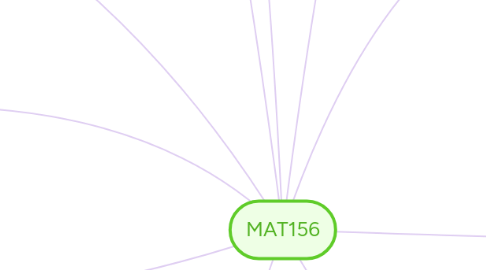
1. Chapter 3.3- Multiplication and Division of Whole Numbers
1.1. Mult. of Whole #
1.1.1. repeated Addition
1.1.1.1. 3+3+3+3=12
1.1.2. The Array and Area
1.1.2.1. ㅁㅁㅁ ㅁㅁㅁ ㅁㅁㅁ
1.1.3. Cartesian-Production
1.1.3.1. AXB A,B =factor AXB =product
1.2. Property
1.2.1. cont.
1.2.2. Zero Mult.
1.2.2.1. ax0=0
1.2.3. Distributive
1.2.3.1. a(b+c)=ab+ac
1.3. Rules
1.3.1. Dividen/Divisor=quotient
1.3.2. n/0=undefined
1.3.3. 0/n=0
1.3.4. 0/0=undefined
1.3.5. PEMDAS
1.3.5.1. Parenthesis
1.3.5.2. Exponents
1.3.5.3. Multiplication Division
1.3.5.4. Addition Subtraction
2. Chapter 3.2- Argorithms for Whole-Number Addition and Subtraction
2.1. Addition Algorithm
2.1.1. manipulation
2.1.2. paper/pencil operation
2.1.3. regroup/trade problems
2.1.3.1. carrying
2.1.3.1.1. 1 37 + 28
2.1.4. Lattice Algorithm for Addition
2.1.4.1. 3 5 6 + 5 6 7 0/1/1/ 8/1/3
2.1.4.2. 9 2 3
2.2. Subtraction Algorithms
2.2.1. base-ten
2.2.2. remove take-away
2.3. Equal-Addition Algorithms
2.4. Understanding Addition and Subtractions in Bases Other than ten
3. Chapter 3.1- Subtraction of Whole Numbers
3.1. Inverse Operation
3.1.1. Subtractions is inverse operation of addition
3.2. Models
3.2.1. Take-away
3.2.1.1. take away 3 blocks from 8
3.2.2. Missing Addend
3.2.2.1. 3+___=8
3.2.3. Comparison
3.2.3.1. Me 3 blocks You 8 blocks
3.2.4. Number Line
4. Chapter 3.1- Addition of Whole Numbers
4.1. Set Model
4.1.1. Set A {a,b,c}
4.1.2. Set B {d,e}
4.1.3. A+B={a,b,c,d,e}
4.1.4. n(A)+n(B)=3+2=5
4.1.5. Addend
4.1.5.1. 1+2
4.1.6. Sum
4.1.6.1. =3
4.2. Number Line (Measurement) Model
4.2.1. Always start at ZERO
4.3. Ordering Whole Numbers
4.3.1. Greater than and Less than
4.4. Properties
4.4.1. Closure Property
4.4.1.1. If a and b are WHOLE NUMBERS, then a+b is a WHOLE NUMBER
4.4.1.2. 3+4=7
4.4.2. Commutative Property
4.4.2.1. a+b=b+a
4.4.2.2. ex) 1+2=2+1 3=3
4.4.3. Associative Property
4.4.3.1. (a+b)+c=a+(b+c)
4.4.3.2. ex) (1+2)+3=1+(2+3) 3+3=1+5 6=6
4.4.4. Identity Property
4.4.4.1. a+0=a
4.4.4.2. ex) 1+0=1
4.5. Addition Facts
4.5.1. Counting On
4.5.1.1. 3+4=3,4,5,6,7
4.5.2. Doubles
4.5.2.1. 3+4 3+3=6 +1 Double +1
4.5.3. Making 10
4.5.3.1. 8+5 (8+2)+3 10+3
4.5.4. Counting Back
4.5.4.1. 9+7 (10-1)=7
4.5.5. Inductive Reasoning
4.5.5.1. Method of making generalizations based on observations and patterns
5. Chapter 3.4- Algorithms for Whole Number Multiplication and Division
5.1. Single x 2 digits
5.1.1. 12x4
5.1.2. 10+2 x 4
5.2. Two Digit Factors
5.2.1. 2 3 x 1 4
5.2.2. 9 2 2 3 0
5.3. Lattice Mult.
5.4. DMSCB
5.4.1. Divide
5.4.2. Multply
5.4.3. Subtract
5.4.4. Check
5.4.5. Bring Down
6. Chapter 4.3- Functions
6.1. Each element of A is paired with exactly one element of B
6.2. Input Output
6.2.1. What goes in
6.2.1.1. Horizontal
6.2.2. What comes out
6.2.2.1. Vertical
6.3. Function as Equation
6.3.1. f(0)=0+3=3
6.3.2. Domain Range
6.3.2.1. f(0)
6.3.2.2. 3
6.4. Table and Ordered Pair
6.4.1. 0 1 1 3 2 5 3 7
6.4.2. (0,1) (1,3) (2,5) (3,7)
6.5. Every Function is a Relation
6.5.1. not every relation is a function
7. Chapter 2.2,2.3- Sets
7.1. Language of Set
7.1.1. set is understood to be any collection of object
7.2. One-to-one Correspondence
7.2.1. same number of elements
7.3. Equivalent Sets
7.4. Cardinal Numbers
7.5. Sets
7.5.1. AㅌB
7.6. Subsets
7.6.1. AㄷB
7.7. Set Intersection
7.7.1. A(opposite U)B
7.8. Set Union
7.8.1. AUB
7.9. Set Difference
7.9.1. A-B
7.10. Properties of Set Operations
7.10.1. Associative Property
7.10.2. Distributive Property
8. Chapter 2.1- Numeration System
8.1. Hindu-Arabic Numeration System
8.1.1. Flat=100
8.1.2. Long=10
8.1.3. Unit=1
8.2. Tally Numeration System
8.2.1. I, II, III, IIII, IIIII
8.3. Egyptian Numeration System
8.4. Babylonian Numeration System
8.5. Mayan Numeration System
8.6. Roman Numeration System
8.6.1. I=1
8.6.2. V=5
8.6.3. X=10
8.6.4. L=50
8.6.5. C=100
8.6.6. D=500
8.6.7. M=1000
8.7. Base System
8.7.1. Base Five Numbers
8.7.1.1. ex) one two three base five
8.7.1.2. 124 five
8.7.1.2.1. (1x5^2)+(2x5^1)+(4x5^0)
8.7.1.2.2. 25+10+4
8.7.1.2.3. 39
9. Chapter 1.2- Explorations with Patterns
9.1. Inductive Reasoning
9.2. Arithmetic Sequence
9.2.1. an=a1+(n-1)d
9.3. Geometric Sequence
9.3.1. an=a1xr^n-1
9.4. Fibonacci Sequence
9.4.1. 1,1,2,3,5,8,13,21...
9.5. Other Sequence
10. Chapter 1.1- Problem Solving
10.1. 4-Step Problem Solving
10.1.1. 1. Understand the problem
10.1.2. 2. Devising a plan
10.1.3. Carrying out the paln
10.1.4. Looking back
10.2. Gauss's approach
10.2.1. 1+2+3+...+999
10.2.1.1. 999+1=1000, 998+2=1000,...
10.2.1.2. 999 sums of 1000= 999x1000
10.2.1.3. divide by 2=499500
10.2.2. 1+3+5+...+103
10.2.2.1. 103+1=2n
10.2.2.2. n=52
10.2.2.3. 52x104/2
10.2.2.4. 2704
10.2.3. 33+34+35+...+120
10.2.3.1. 120+33=153
10.2.3.2. 120-33+1=88
10.2.3.3. divide 88 by 2=44
10.2.3.4. 44x153=6732
